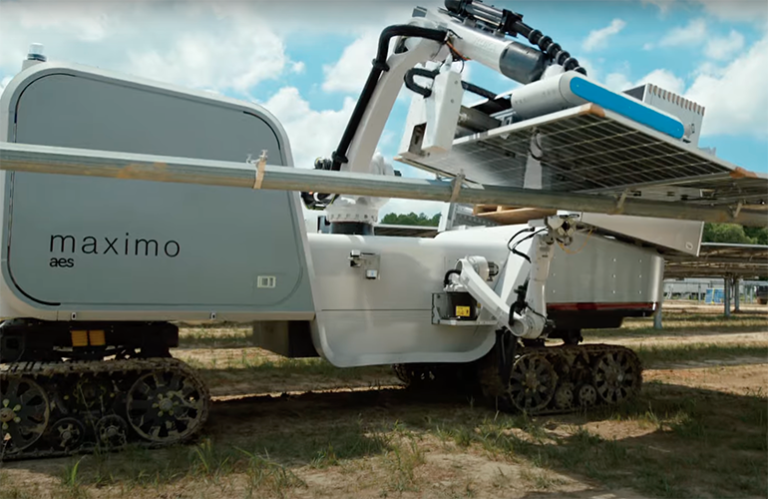 The AES Corporation today introduced “Maximo,” an AI-powered solar installation robot. Maximo is a robotic solution that works with construction teams to help meet the rapidly growing demand for renewable energy. AES released its first AI installation robot in 2021, called Atlas.
The AES Corporation today introduced “Maximo,” an AI-powered solar installation robot. Maximo is a robotic solution that works with construction teams to help meet the rapidly growing demand for renewable energy. AES released its first AI installation robot in 2021, called Atlas.
According to the IEA, the annual increase in solar energy is expected to triple by 2035 and the workforce will need to almost double. Maximo can install solar panels in half the time and half the cost, working with on-site crews to accelerate the deployment of renewable energy, reducing time-to-power for customers.
“Maximo is the first proven solar installation robot on the market,” said Andrés Gluski, president and CEO of AES. “We are facing an unprecedented increase in demand, driven in large part by the rise of AI and data centers, and innovations like these will be fundamental to accelerating our ability to bring projects online faster and with greater efficiency.”
Maximo improves the safety and scalability of solar energy installations by automating the heavy lifting of installing and attaching solar panels. It accelerates project turnaround times, creates new high-tech jobs and offers opportunities for new segments of the workforce.
Maximo has already installed almost 10 MW of solar energy and is expected to install 100 MW by 2025. AES expects to use Maximo to build up to 5 GW of its solar backlog and pipeline over the next three years.
AES will use Maximo in the construction of the 2-GW Bellefield project in Kern County, California, the largest solar and storage project in the US, under contract to Amazon. The Oak Ridge Solar project in Louisiana, which also powers Amazon operations, was a major milestone in Maximo’s journey as the first utility-scale deployment.
“As society’s energy needs grow, so does the demand for new solar and wind projects, requiring us to innovate so we can scale faster,” said Chris Walker, director of AWS Sustainability. “We are excited to partner with renewable energy developers like AES who are prioritizing the use of AI technologies that can help us rapidly move forward toward a carbon-free energy future.”
Maximo’s AI-powered features include:
- AI-powered computer vision: Ensures accurate panel placement, improving installation accuracy.
- Continuous learning: adapting for optimal performance and driving efficiency improvements.
- Image Reconstruction: Proprietary generative AI pipeline that reconstructs images obscured by glare or related lighting conditions.
“Today, the U.S. solar industry is moving at an impressive pace, installing approximately 15,000 modules per hour, weighing one million pounds. Looking ahead, this installation rate is expected to reach 50,000 modules per hour by 2035,” said Chris Shelton, Chief Product Officer of AES. “In response to this exponential growth, we are scaling Maximo and deploying fleets of continuously improving robots to enable our teams to achieve faster and more competitive installations.”
Maximo can perform in a wide range of climates and lighting conditions and has been field validated at several US project sites. Its installation will begin in Bellefield in August.
News item from AES


